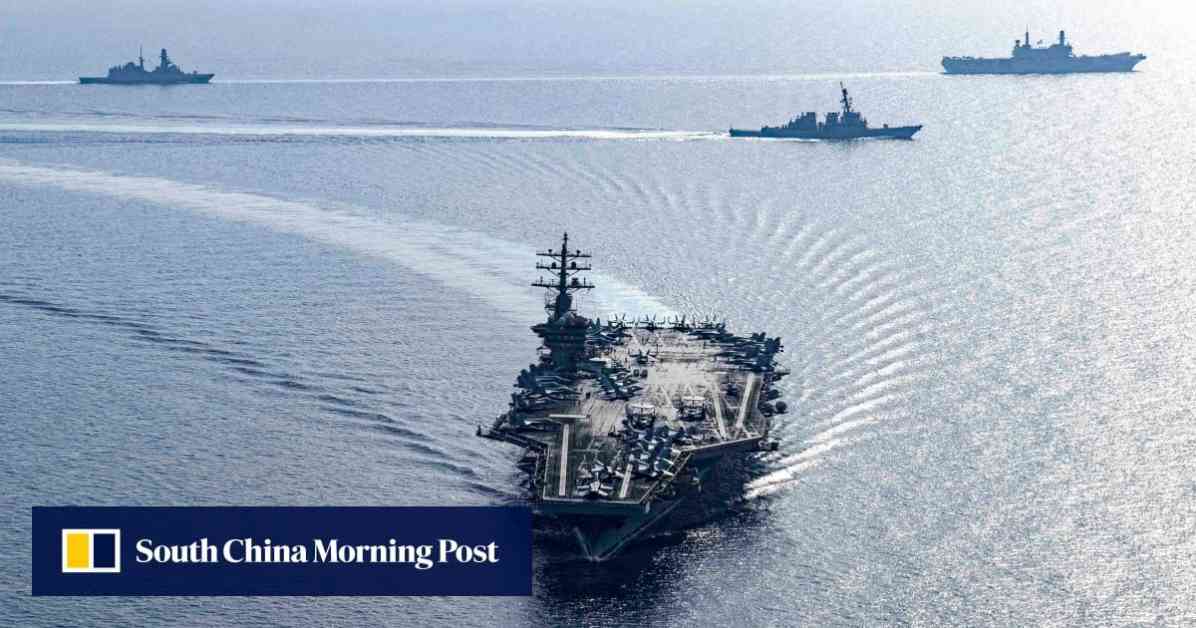US Navy’s Enhanced Strategy for Potential Conflict with China by 2027
The US Navy is ramping up its preparations for a potential conflict with China, drawing insights from recent combat experiences in the Red Sea and the strategies employed by Ukraine to deter Russian aggression in the Black Sea. These lessons are shaping the Navy’s approach to combat readiness, with a focus on incorporating advanced technologies and expanding combat skills.
One key aspect of the Navy’s strategy is the integration of drones and unmanned surface vessels into its operations. These technologies allow for enhanced surveillance, reconnaissance, and offensive capabilities, enabling the Navy to maintain a competitive edge in a future conflict scenario. Additionally, the Navy is placing a strong emphasis on the effective operation of shipboard guns, ensuring that sailors are proficient in utilizing these weapons systems to their full potential.
Admiral Lisa Franchetti, the chief of naval operations, is spearheading the Navy’s efforts to prepare for potential conflict with China. In a recent interview, she highlighted the importance of being ready to face the evolving threats posed by China, particularly in light of President Xi Jinping’s directive for Chinese forces to be prepared to invade Taiwan by 2027. Franchetti emphasized the need for the Navy to be proactive and forward-thinking in its approach to readiness.
Strategic Goals and Challenges
Franchetti has outlined a series of ambitious goals in the Navy’s new navigation plan, aimed at enhancing readiness and capabilities across the service. These goals encompass a wide range of areas, from streamlining ship depot maintenance processes to improving Navy infrastructure and recruiting efforts. One of the key priorities identified in the plan is the utilization of drones and autonomous systems to augment the Navy’s operational effectiveness.
The Navy faces several challenges in meeting these goals, including overcoming recruiting struggles to ensure that it has an adequate number of skilled sailors to support its operations. Additionally, the Navy must navigate logistical hurdles and budget constraints to implement the necessary enhancements to its infrastructure and technology capabilities. Franchetti’s leadership will be crucial in guiding the Navy through these challenges and steering it towards achieving its strategic objectives.
Preparing for Future Conflict
As the Navy prepares for a potential conflict with China, it is imperative that it remains adaptable and responsive to emerging threats and challenges. This includes staying abreast of technological advancements and incorporating them into its operational framework, as well as conducting regular training exercises to ensure that sailors are well-prepared for combat scenarios.
The Navy’s focus on enhancing its combat skills and leveraging advanced technologies underscores its commitment to maintaining a competitive edge in an increasingly complex geopolitical environment. By prioritizing readiness and modernization, the Navy is positioning itself to effectively respond to potential threats from China and other adversaries, safeguarding US national security interests in the process.
In conclusion, the US Navy’s strategy for potential conflict with China by 2027 reflects a proactive and comprehensive approach to readiness and preparedness. By drawing on lessons learned from recent combat experiences and prioritizing the integration of advanced technologies, the Navy is positioning itself to meet the evolving challenges of modern warfare. With Admiral Franchetti’s leadership and a clear focus on strategic goals, the Navy is poised to navigate the complexities of a potential conflict with China and uphold its role as a key defender of US national security.



















